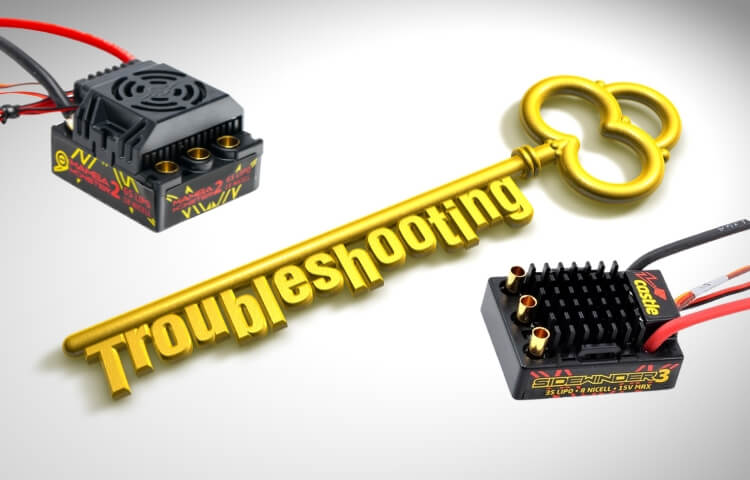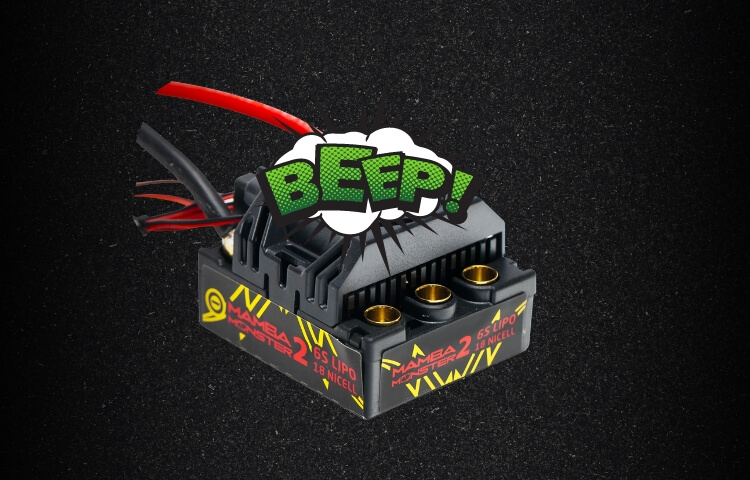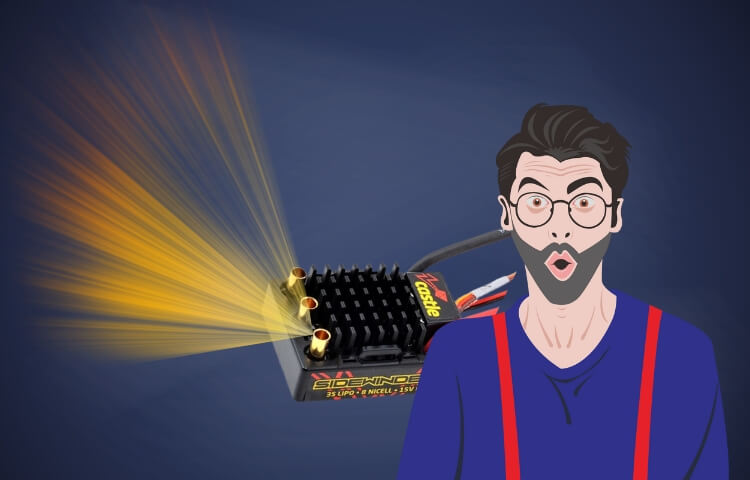If you’re having trouble with your Castle ESC, there are a few things you can do to troubleshoot the issue. In this article, we will do Castle ESC Troubleshooting.
First, ensure the battery is connected correctly and the ESC is turned on. Next, check the motor connections to make sure they are secure.

If you’re having trouble with your Castle ESC, there are a few things you can try to troubleshoot the issue. First, check all of your connections to make sure they are secure. Next, try running your ESC without a battery connected to see if it powers on properly.
If neither of these solutions works, you may need to replace your ESC.
Castle ESC Keeps Beeping
If your ESC is beeping, there’s a good chance that the battery needs to be replaced. But before you do that, it’s essential to understand what may be causing the problem. There are three main reasons why your Castle ESC keeps beeping:
- The RC toy ESC sensor might be malfunctioning. This is a common problem with RC toys. It’s very easy to fix. All you need to do is just make the motor off and then start it again. If you are still having trouble, replace the ESC with a new one.
IF THE TIME HAS COME TO REPLACE YOUR ESC, YOU CAN SEE SOME OF THE BEST ESC HERE
- Another cause is faulty wiring. The problem appears to be caused by a misaligned or broken wire in the circuitry or a loose wire.
- The battery may be drained. If you’re only hearing the beeping when you’re not able to play your vehicle, it’s likely that the battery is low. It’s important to keep an eye on the battery level, and if needed to replace it when it’s low.
IF IT’S TIME TO REPLACE BATTERY, YOU CAN CHECK OUT SOME OF THE BEST BATTERIES HERE
Also Read: Top 10 Best RC Cars under $100 – Reviews & Buyer’s Guide
Castle ESC is Not Turning on
If you’re having trouble getting your Castle ESC to turn on, you can try a few things. Let’s start ESC Troubleshooting. First, make sure that the battery is connected correctly and charged. Next, check the ESC’s programming to see if it is set to the correct mode.
If everything looks good, but the ESC still won’t turn on, try resetting it by unplugging and replugging the battery. Finally, if none of these solutions work, you may need to replace the ESC.
Castle ESC Beep Codes
If you’ve ever been in a situation where your Castle ESC suddenly starts beeping and you have no idea why then you need to know the beep codes. You can understand Castle ESC problems if you know the beep codes.

Start Fail
When you get 2 short beeps it means, the ESC is unable to start the motor. Make sure your motor wiring is not interfering with your driving vehicle.
Low Voltage Cutoff
4 short beeps means, the ESC’s internal datalog has reached its measurements. The datalog must be cleared before any new data can be recorded. This warning can be disabled in the Castle Link settings under the Basic tab.
Over Current
When you get 1 long and then 1 short beep it means, the ESC has detected an operating current that has exceeded the ESC’s capability
Sensors Lost
When you get 3 short beeps it means, the ESC detects abnormal signals or loss of signal in the sensor wire from the motor. Check the sensor wiring of the ESC and motor is in good connection.
Radio Glitch
2 short beeps and then 1 long beep means, the ESC detected unusual signals or loss of signal on the throttle wire.
Over Temperature
1 short beep then 1 long beep then 1 short beep means, the ESC reached an over-temperature condition. This occurs when the device is operating under too high a load or the cooling air is not flowing properly.
Excessive Lord
1 short beep and then 2 long beeps means, the ESCs detected very high currents. The problem may be due to damaged wiring, using too large a motor according to the controller, obsessive gearing, or wrongfully soldered motor connections.
Suppose multiple obsessive load faults are detected, beeping will be disabled to keep safe the ESC. If there is still an error continues, contact Castle Tech Support.
AUX Wire Radio Glitch
1 long and then 2 short beeps which mean, the ESC has detected abnormal signals or loss of signal on the AUX cable. Note If you don’t use the AUX cable function, please disable AUX cable creation.
BEC Over Temperature
1 long then 1 short and 1 short beep means, the ESC detects that the integrated BEC is overheating due to a current drop above the BEC’s rating. This is usually caused by a faulty servo or a servo that exceeds the BEC’s amp rating (e.g. digital servos with very high torque/speed values).
Data Log Full Warning
4 short beeps means, the ESC’s internal datalog has reached its measurements. The datalog must be cleared before any new data can be recorded. This warning can be disabled in the Castle Link settings under the Basic tab.
Motor Over Temperature
2 long beeps and then 1 short beep means, the ESC has detected that the sensored motor temperature has exceeded the motor temperature cutoff value set in the Castle link. Motor temperature cutoff is only available during sensored motor operation.
Motor temperature sensor varies. Always check the motor temperature periodically after adjusting the motor system. This warning is disabled by default and can be adjusted via Castle Link
Also Read: 10 Steps: How to Make an RC Car Faster
Castle ESC Light Codes
Depending on what you’re doing, the LED can have different meanings. In this section, we will discuss all possible situations and Castel ESC light codes.
Suppose you don’t calibrate and you don’t have throttle input:
- Red and Yellow flashes that are mean it’s over temperature
- Green and Yellow flashes that are mean low voltage cutoff
- Green or Red flashes that are mean the Speed control is not calibrated and not armed and the throttle sub-trim is not at 0.
- Green or Red on hold means Does not occur in neutral, expressing full throttle/reverse
- Yellow on hold indicates that ESC is only in sensor mode and CHEAT mode is on; ESC is armed and prepared to drive.
- If you’re experiencing flashing green, red and yellow lights on your transmitter while the motor is running, it may be indicative of a problem with the controller or with the receiver. There are a few things you can check to determine the cause of the problem:
- Make sure the receiver is plugged in correctly. The receiver wire should be plugged into the receiver port on the controller, and not into the receiver itself.
- Make sure the throttle channel on the receiver is set to the correct speed. If the throttle channel is set to the wrong speed, the controller will not be able to communicate with the receiver.
- Make sure the controller is connected to the power source. If the controller is not connected to the power source, it will not be able to communicate with the receiver.
Suppose you apply throttle forward or throttle reverse while not calibrating:
- When your Castel ESC flashes red and yellow, it means the temperature is getting too high. This can happen if your motor is too hot, or if the heat sinks aren’t keeping up with the heat being produced.
- When your Castel ESC flashes green and yellow, it means that your battery is low, or in other words, it’s a low voltage cutoff. If you don’t have a spare battery, it’s time to replace it.
- If your Castel ESC is flashing Red or Green, it means that your throttle is partially open, respectively.
- Solid Green indicates full throttle, while Red indicates the reverse. Castel’s ESC shows Solid Green when in full throttle and Red when in reverse.
- If you’re experiencing flashing green, red and yellow lights while your receiver is beeping, it’s likely that you have plugged the receiver wire in backward. This is most commonly caused by a problem with the controller or with the throttle channel on the receiver.
If you’re still experiencing problems, it might be worth checking to make sure that the receiver is plugged in correctly, and that the throttle channel on the receiver is working correctly.
Suppose you apply throttle forward or throttle reverse when calibrating:
- Do you get Castel ESC Flashing Red and Yellow? You shouldn’t see ESC Flashing Red and Yellow when calibrating. It’s showing because You have a problem with your calibration, or the calibration has been tampered with, which is also outside the scope of this thread.
- Your ESC is Flashing Green and Yellow, this should not happen when calibrating. Batteries can be discharged below their cutoff voltages
- If your ESC is flashing green or red, it means that it is looking for full reverse (red) or full throttle (green). If it continues for more than 8 seconds, it means that speed control is seeing partial throttle (green) or reverse (red) and should increase the endpoints on the transmitter.
- When your ESC LED is Solid green or red, it indicates that full throttle (green) or reverse (red) has been read
- Flashing Yellow is not indicating a Neutral Signal, check to make sure that your transmitter’s throttle is set to zero and the exponential is set to 0 or linear, and mixing is disabled.
- Flashing green, red, and yellow while beeping indicates that the signal from the receiver is wrong and beeping indicates that the cable of the receiver is plugged unwilling position into the receiver. The probable problem with the controller or with the throttle channel on the receiver
- Only the yellow LED flashing indicates that the ESC is logging data and is armed. This indicates that the throttle signal is not transforming and the ESC may be plugged into the invalid channel or there may be a problem with the radio.
- When LED shows solid Yellow that indicates the data logger is full. To clear and download your data logger use the Castle link.
Castle ESC Flashing Yellow
If the light on the receiver doesn’t go out then the remote control might be faulty, or the receiver itself might be broken.

If you see flashing yellow, it does NOT mean your transmitters are in neutral, they could be on or off.
So what does a flashing yellow light mean? Basically, it’s a warning to drivers that they need to slow down and be prepared to stop if necessary. Flashing yellow lights are often used in conjunction with signs that say “Caution” or “Slow Down.”
So if you see a flashing yellow light, take heed slow down, and check your RC vehicle!
Castle ESC Solid Yellow
Yellow on hold is indicating ESC is in Smart Sense brushless mode with CHEAT mode disabled; ESC is armed and ready to drive.
When LED shows solid Yellow that indicates the data logger is full. Use the Castle Link to clear the data logger, and download your logged data.
Why is My Castle ESC Blinking Green?
If your Castle ESC is blinking green, it’s most likely because the firmware needs to be updated. To do this, you’ll need to connect the ESC to your computer using a USB cable. Once connected, open the Castle Link software and follow the prompts to update the firmware.
Castle ESC Not Beeping
If your castle ESC not beeping, there are a few things you can check. First, make sure that the battery is connected correctly. If the battery is properly connected and the ESC still isn’t beeping, try resetting the ESC by disconnecting and then reconnecting the battery.
If the ESC still isn’t beeping after resetting it, there may be an issue with the firmware or hardware. Contact customer support for assistance.
Castle ESC No Throttle
If you’re a fan of RC cars, then you know that one of the most critical aspects of the car is the throttle. If you are facing no throttle problem on your Castle ESC then the possible rezone are
- It is most likely that you need to calibrate the transmitter.
- The ESC is not receiving power from the battery. Check the battery connections and battery polarity. If the ESC is receiving power, check the battery voltage and make sure it is within the expected range for your system.
- The ESC is receiving power, but there is an issue with the receiver’s input signal. Check to make sure that all receiver components are installed correctly and are not loose.
- The ESC has a bad throttle sensor. Make sure the throttle sensor is installed correctly.
- The ESC has a bad motor shaft.
How Do You Reset the ESC in Castle?
If you need to reset your ESC, there are a few different ways you can do it. One way is to disconnect and reconnect the battery simply. This will usually reset the ESC back to its default settings.
Another way is to use the Castle Link software. This software allows you to change various settings on your ESC, including the ability to reset it. Finally, if all else fails, you can always contact Castle directly, and they will help you troubleshoot the issue.
How Do I Calibrate My ESC Without the Button?
To calibrate your ESC without the button, you’ll need to connect the positive and negative leads of your ESC to your battery. Then, you’ll need to touch the two leads together for a few seconds. After that, you should hear a beep from your ESC, indicating that it’s calibrated.
How Do You Calibrate a Throttle ESC?
ESC’s or electronic speed controllers are used in radio-controlled vehicles to varying the speed and direction of the motors. ESC’s come in various shapes and sizes, but most commonly, they are rectangular with two sets of three pins. The top set is usually labeled Battery, Motor, and Signal.

The bottom set is usually GND (Ground), 5V, and BEC (Battery Elimination Circuit). So the first thing you need to do when calibrating your throttle ESC is to connect it to your battery pack. Once it is connected, turn on your transmitter and move the throttle stick to its full forward position.
You should hear a beep from the ESC, indicating that it is armed and ready to go. If you don’t hear a beep, check your connection between the battery and ESC, as well as the position of the throttle stick on your transmitter.
Once you have verified that everything is connected properly and the ESC is armed, slowly increase the throttle until the motor reaches its maximum RPM.
At this point, you will want to note two things: The current draw of the motor at full power and the sound of the motor running at full power. The current draw can be checked by looking at the ammeter on your ESC; if one is not present, you can use a voltmeter to measure the voltage across one of the motor leads while it is running at full power.
Note that most brushless motors will consume more current at higher temperatures; therefore, if your readings seem low, make sure that both the motor and ESC are not too hot to touch before making any adjustments!
The sound of your motor running at full power can give you an indication of how smoothly it is operating; if it sounds ‘rough’, then there may be something wrong with either the windings inside the motor or the bearings inside which could cause premature failure down the line.
On the other hand, if everything looks good so far (i.e., no smoke coming from either the motor or ESC!) It’s time to start adjusting things. The first adjustment you want to make is called the ‘low voltage cutoff.
This setting tells the ESC at what voltage it should cut off power to the motor so that the battery doesn’t get drained entirely during operation and cause the motor or servo positions to try and hold their last known positions(which often results in crashes!).
To adjust this setting on most ESC’s you will need to hold down the programming button while increasing/decreasing throttle enough so that the LED indicates the desired cutoff voltage has been reached ( usually 3.0V or 3.5V per cell in the total number of cells you are using in your battery pack- e.g., a 2S LiPo battery pack would have a low voltage cutoff setting of 6v).
Check your ESC manual for specific instructions on your model if needed before making any changes!
Conclusion
If you’re having trouble with your Castle ESC, there are a few things you can try to troubleshoot the issue. First, check the battery connection and make sure it’s secure. Next, check the motor connection and ensure that it’s tight.
Finally, check the ESC programming to make sure everything is set correctly. If you still can’t get your ESC to work properly, contact Castle support for further assistance.

